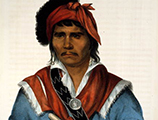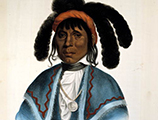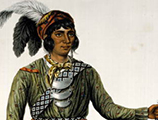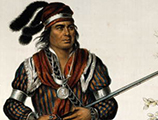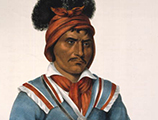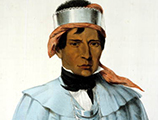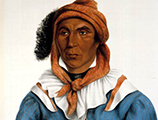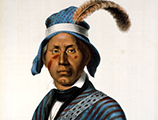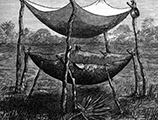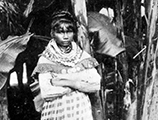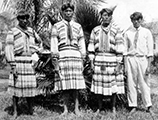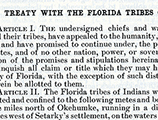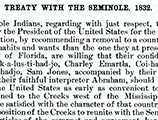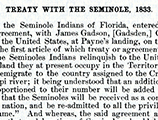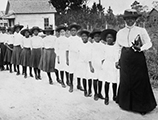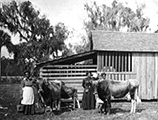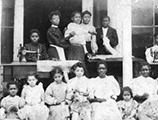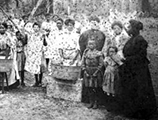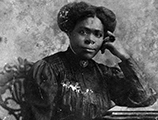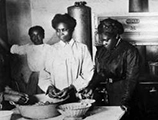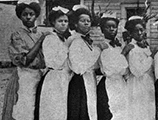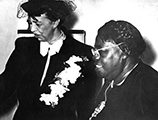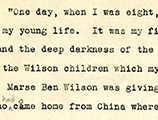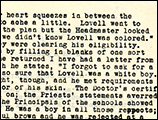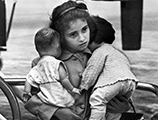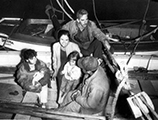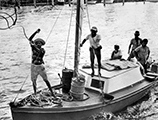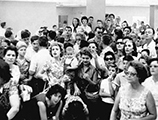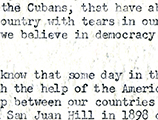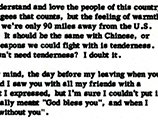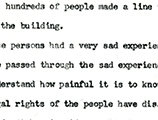Primary Source Sets
Using primary source documents gives students the power to analyze history as historians do.
Primary sources are created in the moment of the historical event being studied. These primary source sets contain documents and photos arranged by topic that teachers can use in their lesson plans. Each set is accompanied by a teacher’s guide containing historical context, teaching suggestions, and relevant NGSSS and Florida Standards.
Primary Source Sets
Research Starters
Seminole Leaders of the Second Seminole War
The lithographs included here feature prominent Seminole leaders during the Second Seminole War (1835-1842). This primary source set and the accompanying teacher's guide are part of the Florida Seminoles educational unit.
The Seminoles and Pioneer Life in Florida
This primary source set and the accompanying lesson plan are part of the Florida Seminoles educational unit.
United States Government Treaties with the Seminoles
The three treaties included here represent the most important agreements between the U.S. and the Seminoles in Florida. This primary source set and the accompanying teacher's guide are part of the Florida Seminoles educational unit.
Saltworks in Florida During the Civil War
The Confederate army's meat supply was preserved with salt. With the Union blockade in place, the Confederate states turned to local sources for this important mineral. This primary source set and the accompanying teacher's guide and lesson plan are part of the Florida in the Civil War educational unit.
Diaries and Letters From the Civil War
John D. Pittman was in college was when Florida seceded from the Union. The letter from former Florida governor General Richard Keith Call expresses his pro-Union, pro-Southern sentiments on the eve of the Civil War. Wilber Wightman Gramling’s was a Florida soldier. Robert Watson served in the Confederate States Navy. This primary source set and the accompanying teacher's guide are part of the Florida in the Civil War educational unit.
Government Documents From the Civil War
After Abraham Lincoln won the presidential election of 1860, Florida Governor Madison Starke Perry responded by urging state legislators to call a convention to consider the question of whether to secede from the Union. This primary source set and the accompanying teacher's guide are part of the Florida in the Civil War educational unit.
Photographs of Mary McLeod Bethune and Her School
The photographs below document the earliest days of Mary McLeod Bethune's school. This primary source set and the accompanying teacher's guide and lesson plan are part of the Mary McLeod Bethune educational unit.
An Interview With Mary McLeod Bethune
These documents relate to an interview with Mary McLeod Bethune conducted in 1939 or 1940 by Fisk University president Charles S. Johnson and collected by Daniel M. Williams. This primary source set and the accompanying teacher's guide and lesson plan are part of the Mary McLeod Bethune educational unit.
Photographs of the Cigar Industry in Florida
Commercial cigar rolling first came to Florida in the 1830s and became one of the most important industries in the southeastern United States. This primary source set and the accompanying teacher's guide and lesson plan are part of the Cigar Industry Changes Florida educational unit.
Documents Related to the Cigar Industry in Florida
These documents illustrate the importance of labor issues and the connection between the growth of the cigar industry and the growth of Tampa itself. This primary source set and the accompanying teacher's guide and lesson plan are part of the Cigar Industry Changes Florida educational unit.
Henry Flagler's Railroad
Henry Flagler was the founder of what became the Florida East Coast Railway. This primary source set and the accompanying teacher's guide and lesson plan are part of the Railroads Change Florida educational unit.
A. Philip Randolph
Asa Philip Randolph was the first president of the Brotherhood of Sleeping Car Porters. This primary source set and the accompanying teacher's guide are part of the Railroads Change Florida educational unit.
Documents Related to the Railroad Industry
Railroads helped to establish new towns and cities in Florida and served industry. This primary source set and the accompanying teacher's guide are part of the Railroads Change Florida educational unit.
Zora Neale Hurston
This primary source set and the accompanying teacher's guide and lesson plans are part of the Zora Neale Hurston and the WPA in Florida educational unit.
WWII: Rationing and Victory Gardens
During World War II, shortages of goods became common. To ensure fair distribution, and that vital materials would be conserved for military use, the Federal government implemented a rationing policy. This primary source set and the accompanying teacher's guide and lesson plan are part of the Florida During World War II educational unit.
Letter on Education and Jim Crow
The author of this letter was a professor at Bethune-Cookman College. Her son Lovell was accepted to a school in New York, based on glowing recommendations from his pastor, physician, and school principals. When he arrived, he was denied admittance on account of his race. This primary source set and the accompanying teacher's guide are part of The Civil Rights Movement in Florida educational unit.
Cuban Experience: Revolution and Exodus, 1961-62
These photographs were taken in 1961 and 1962 during the early stages of the Cuban exodus to the United States following the Revolution of 1959. This primary source set and the accompanying teacher's guide and lesson plan are part of the Cuban Experience in Florida educational unit.
Letters to the Cuban Refugee Assistance Program, 1961-62
These letters were written by Cuban refugees to the staff of the Cuban Refugee Assistance Program (CRA). The CRA provided health, employment and educational services to Cuban refugees upon their arrival in the United States. Many CRA employees were also Cuban refugees themselves. This primary source set and the accompanying teacher's guide and lesson plan are part of the Cuban Experience in Florida educational unit.
NASA Videos
The Space Age changed Florida forever. Thousands of new workers moved to the state and transformed Cape Canaveral into a hub of aeronautics, electrical engineering and manufacturing. This video set and the accompanying teacher's guide and lesson plans are part of the NASA and the Space Program Change Florida educational unit.
The Florida Everglades
The Everglades are an extensive subtropical marshland extending southward from Lake Okeechobee to the southern tip of the Florida peninsula. This primary source set and the accompanying teacher's guide are part of The History of Water in Florida.
Cross Florida Barge Canal
Engineers and government officials had wanted to dig a canal across Florida since the 16th century. The United States government began construction in the 1930s, but it was halted several times before being shut down entirely in 1971. This primary source set and the accompanying teacher's guide are part of The History of Water in Florida.
Food, Politics and Government
These documents come mainly from the Florida Board of Conservation and the Florida Citrus Commission, two state agencies that have historically been heavily involved in promoting Florida agricultural products. This primary source set and the accompanying teacher's guide are part of the The History of Foodways in Florida.

 Listen: The Bluegrass & Old-Time Program
Listen: The Bluegrass & Old-Time Program